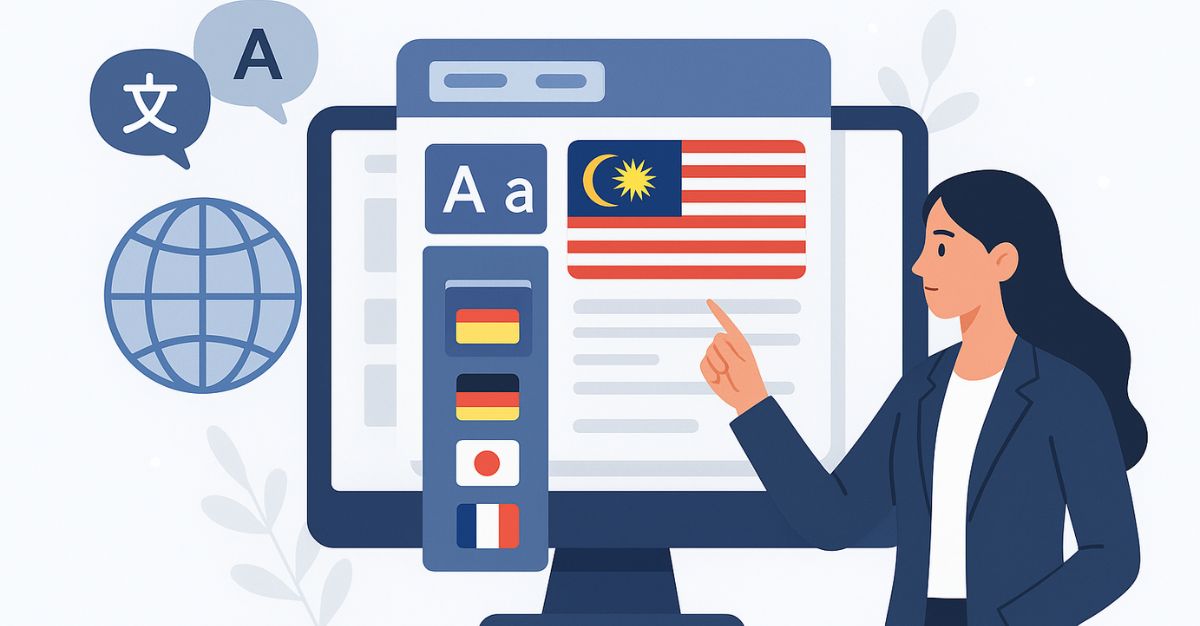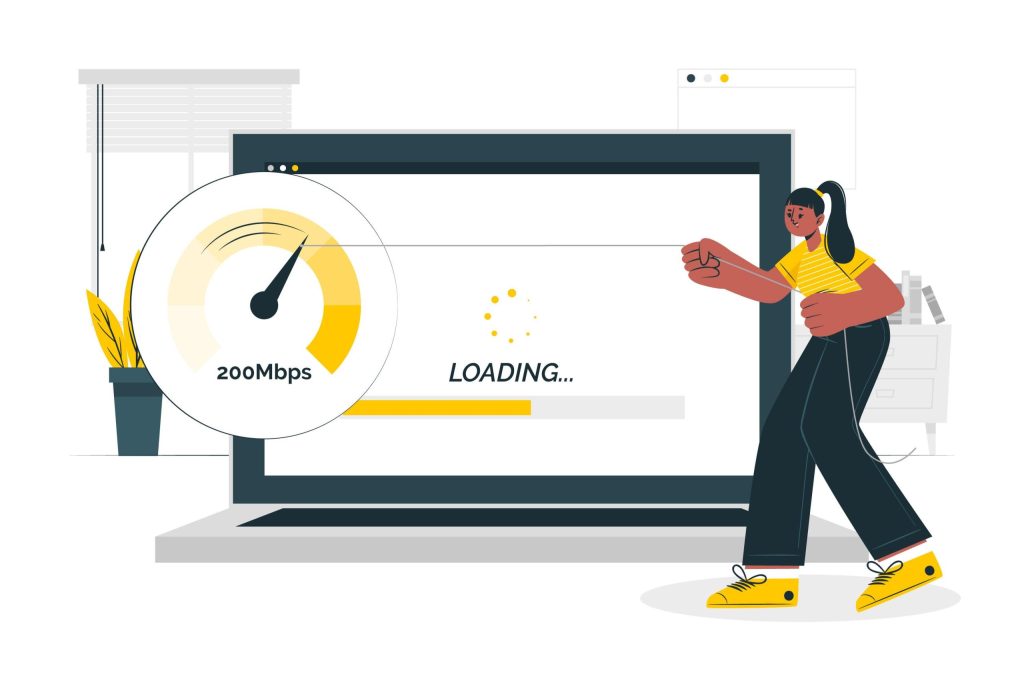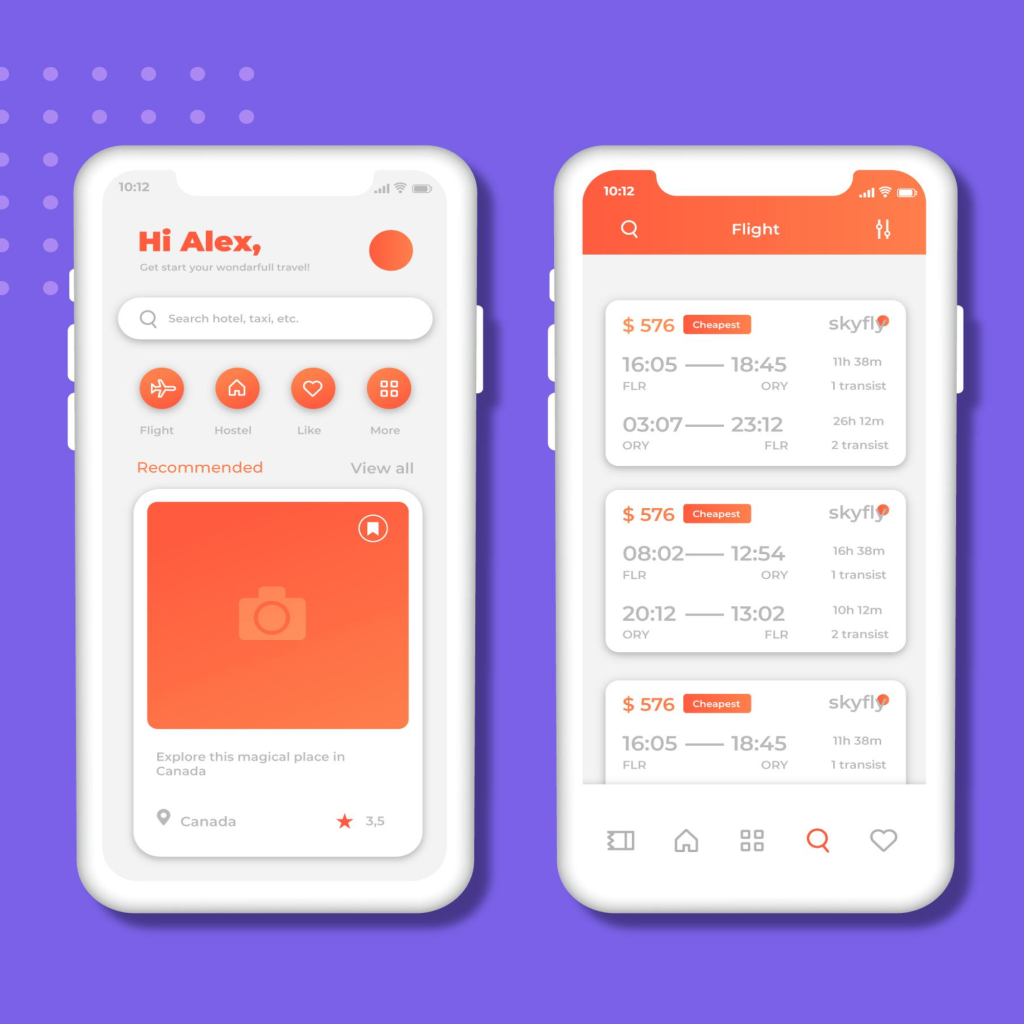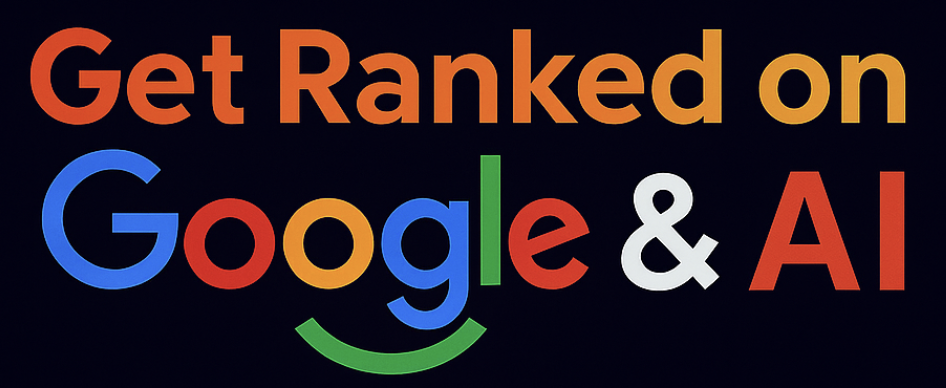Step into any shopping mall in Kuala Lumpur and you’ll hear a mix of Malay, Mandarin, Tamil, and English spoken in just a few minutes.
This diversity reflects daily life in Malaysia, and it also defines the digital world. If your business wants to succeed online, a multilingual website is a necessity.
As for SMEs and corporates alike, designing a multi-language website Malaysia can be the difference between connecting with an entire audience or speaking to only a fraction of it.
The question is not whether Malaysian businesses need multilingual sites, but how to build them effectively.
Table of Contents
Why Multi-Language Websites Matter in the Malaysian Market
The Malaysian market is made up of diverse groups with distinct preferences. Bahasa Malaysia is widely used and, in some industries such as government-linked services, it is mandatory.
Meanwhile, English dominates in business and professional contexts. Chinese and Tamil websites build stronger ties with communities that feel more valued when addressed in their own language.
For businesses, this is not just about courtesy. It is about growth. A multilingual strategy:
- Builds inclusivity and trust.
- Improves brand credibility.
- Expands reach to a broader pool of Malaysian consumers.
- Strengthens local search visibility through multilingual SEO.
The reality is simple: if you want your website to reflect Malaysia, it must speak Malaysian languages.
Want to ensure your website is built for success in the Malaysian market? Explore our corporate website services and get started today!
Core Languages to Include in a Multilingual Website
In Malaysia, four key languages typically matter most:
- Bahasa Malaysia : The national language, widely spoken across urban and rural areas. Essential for accessibility and inclusivity.
- Chinese (Mandarin) : Vital for reaching Chinese-speaking communities, especially in retail and B2B sectors.
- Tamil : A powerful trust signal for specific communities across Malaysia.
- English : Still a standard for business, professional services, and international audiences.
Covering these four ensures your brand resonates across different Malaysian cultural elements, widening trust while strengthening your brand identity.
Best Practices for Malaysian Web Design in Multiple Languages
Creating a multilingual website takes more than adding a Google Translate widget. To succeed, businesses need to plan carefully. Strong Malaysian web design integrates both cultural and technical details.
Key best practices include:
- Language switchers
Clear dropdowns or buttons that allow users to toggle between languages quickly. - Website localisation
Adjusting not just text, but also imagery, dates, and even currency to match user expectations. - Responsive design
Ensuring pages display well on desktop and mobile. This is crucial given the dominance of Malaysian mobile users. - SEO-friendly URLs
Structuring site addresses for each language to improve search engine optimisation.
When these steps are built into the website development process, businesses enjoy stronger engagement and better website performance.
A well-designed multilingual website is key to engaging customers effectively. Let us help you implement best practices with our Ecommerce website services
Translation vs Localisation: What’s the Difference?
Many assume that a multilingual website simply means translating text. But translation alone does not capture the cultural nuance needed for effective communication.
| Translation | Localisation |
| Converts text word for word. | Adapts content for culture, tone, and context. |
| May miss idioms or cultural references. | Uses examples, festivals, or phrases familiar to the target audience. |
| Creates functional content. | Creates meaningful, relatable content. |
For example, a “Chinese New Year Sale” might be translated literally into Bahasa Malaysia, but a localised campaign would adapt the messaging to highlight Angpao deals or festive bundles, which makes more sense to the audience.
Good localisation balances website content with cultural cues, making your business feel approachable and familiar. If you want to see how localisation can boost trust and conversions, explore our guide on local content.
Ready to adapt your website for Malaysian audiences? Our SEO services can optimise your site for multilingual content and boost your local search visibility.
Technical Considerations for a Multilingual Website
The technical side of website development for multilingual projects is just as important as the creative side.
- Content management system: Choose platforms like WordPress or Drupal that support multiple languages and efficient content updates.
- Load speed: Make sure multiple language versions don’t slow down the site.
- Search engine optimisation: Every language version must be optimised with its own keywords, metadata, and headings for better search rankings.
- Website deployment: Plan rollouts carefully, especially if you’re adding new languages in stages.
- Ongoing maintenance: Regular checks are needed to keep translations accurate and website speed strong.
Handled correctly, multilingual sites boost organic traffic and improve google ranking across different search queries.
Local Examples of Multilingual Websites in the Malaysian Market
Let’s look at a few businesses that have embraced multilingual web design:
1. Smartway English


What’s their situation :
Smartway English, a leading provider of English language programs, faced a problem with its website. The site primarily used English, limiting accessibility for Mandarin-speaking potential students. As a result, many prospects were unable to fully engage with the educational offerings.
How we help in :
We implemented a multilingual website with English and Chinese versions. This allowed Smartway to cater to a broader audience in Malaysia, ensuring that Mandarin-speaking students could easily understand course details, eligibility criteria, and enrollment processes.
What it result :
The website redesign was a success. The new bilingual site not only improved user experience for Mandarin speakers but also led to a noticeable increase in course registrations and inquiries.
The addition of the Chinese language option helped Smartway reach more students, showing how multilingual SEO can directly drive engagement and growth.
2. Oriental Kopi
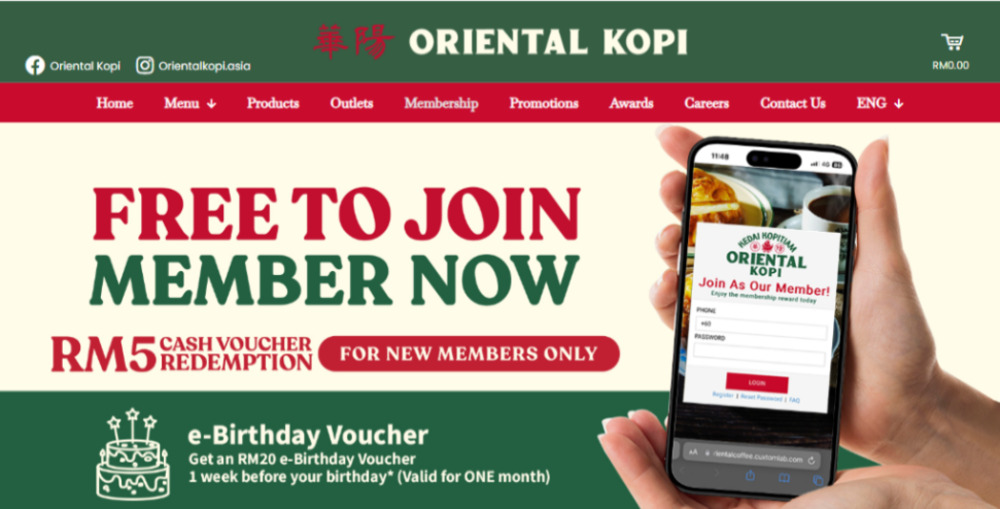
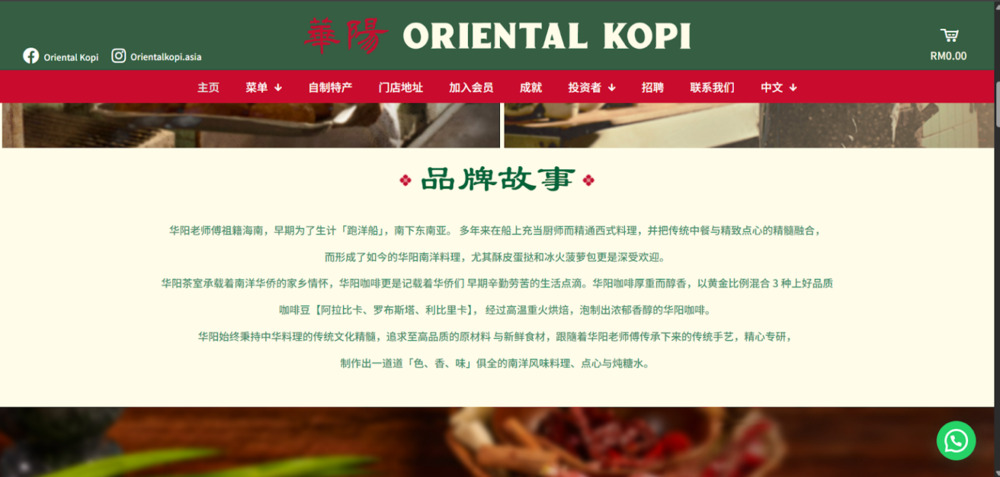
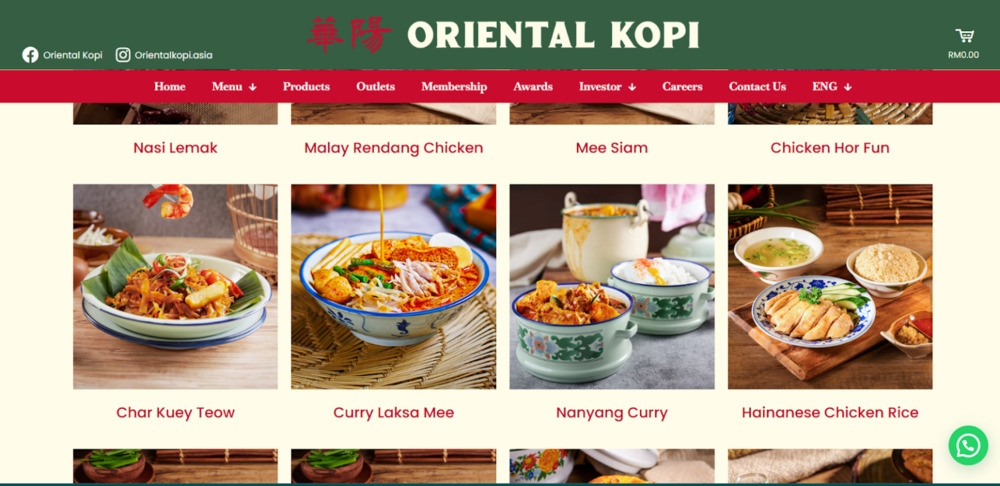
What’s the problem:
Oriental Kopi, a popular F&B brand, relied on a website that only featured English content. With a customer base that includes non-English speakers, especially those who prefer Bahasa Malaysia, this limits their ability to fully engage with their audience.
They also faced challenges in ensuring customers could easily find products and services based on their language preferences.
What we did ?:
We implemented a multilingual website that features Bahasa Malaysia & Chinese alongside English. This included localised menus that reflect local dining habits, allowing customers to select their preferred language for navigation.
Furthermore, we built a fully translated Chinese page to attract more Mandarin-speaking customers, making it easier for them to browse menus, explore promotions, and place orders.
The multilingual approach not only broadened Oriental Kopi’s reach but also created a more inclusive dining experience that resonates with Malaysia’s diverse customer base.
What it result it :
The bilingual site improved user engagement significantly. By offering content in three different languages, Oriental Kopi saw a higher engagement rate from local customers, particularly those from areas where Bahasa Malaysia & Chinese is predominantly spoken.
The website’s localisation helped boost local search visibility, driving more organic traffic and providing customers with a more personalised and seamless online experience.
Multilingual SEO: Driving Visibility in the Malaysian Market
Search habits in Malaysia shift depending on language. Some users search in Bahasa Malaysia, others in English or Mandarin. A multilingual website allows your business to appear in all these queries.
Key factors in multilingual SEO:
- Keyword research for each language version.
- Metadata tailored to each audience.
- Localised content that matches Malaysian search behavior.
- Clear navigation systems that improve user experience.
Done properly, this strengthens local search visibility and helps brands connect with a wider share of the Malaysian market.
Take the First Step Towards Multilingual Trust
Many businesses think of websites as technical tools, but in Malaysia they’re also cultural spaces. A multilingual website reflects who we are as a country. Diverse, dynamic, and connected.
Adding Bahasa Malaysia, Mandarin, Tamil, and English doesn’t just expand reach, it shows respect.
When businesses take this step, they earn trust that can’t be bought with ads or discounts.
If you’d like to explore how to design for multiple Malaysian languages, reach out through.
